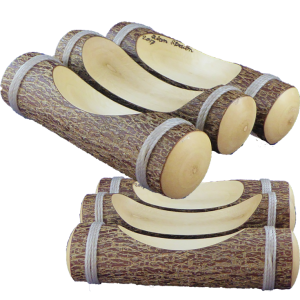Limbs Lashed Together For Rustic Wood Bowl
 May also be viewed on YouTube, Vimeo, or FaceBook. Best right here!
May also be viewed on YouTube, Vimeo, or FaceBook. Best right here!
This project has been a long time in development. While looking at my stash of hazelnut suckers pruned last year, I wondered if I could line up three or four pieces and then turn a bowl.
The problem was how to join the limbs together. They could not remain separate and function together for a bowl.
My first thought was to use dowels to join them. That seemed tacky to use common dowels for a fine woodturning even if the exterior is rustic.
Next thought was to route a groove for a spline. I would mill the spline from the same wood as the limbs. This seemed to be a reasonable plan. Then, I started the project by turning each limb individually to round and smooth the ends.
With the ends nicely done, it was time to use the router. Then as I laid the limbs side by side, I remembered the work I did as a Boy Scout for the Pioneering merit badge. The difference was the scale.
So I racked my brain to remember the process. I used nylon string to lash the limbs side by side. It looked like a small raft.
On a large threaded wood faceplate, I centered the raft with the tail stock. Using scrap, I screwed blocks around the raft and used hot melt glue for final stabilization. Masking tape protected the wood. Duct tape provides a little measure of stability but not much.
Then I hollowed out my rustic raft bowl. But I’m not sure exactly what to call this type of woodturning.
It is about 5 by 4 inches.
Good turning.
Alan,
Wonderful project! I was also a scout, and taught Pioneering Merit Badge as well as the other nature and scoutcraft merit badges as director of nature and scoutcraft departments at my local camp (many decades ago!). Your project is very nostalgic for me as well. Thanks! It brought back fond memories. I have to say, as an east coaster, I’m not familiar with hazelnut wood. I looked it up, and it looks like it is native to Oregon. Not something that has made it to my neck of the woods. Maybe I’ll try this with hornbeam or mountain maple. Something with tight attractive bark, and relatively hard wood.
Lou
I think you caught the vision: tight, attractive bark and relatively hard wood.
Good turning.
Alan